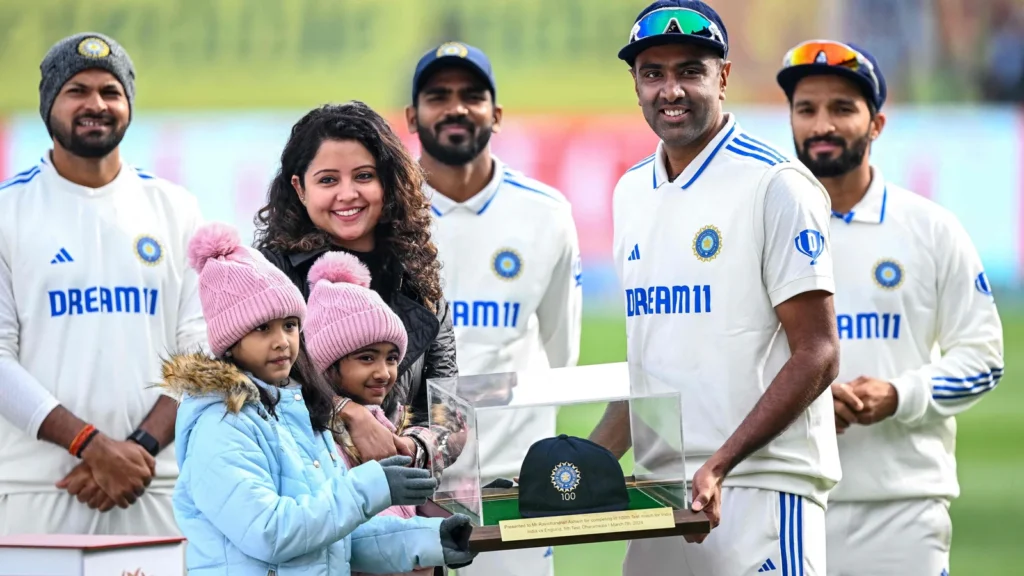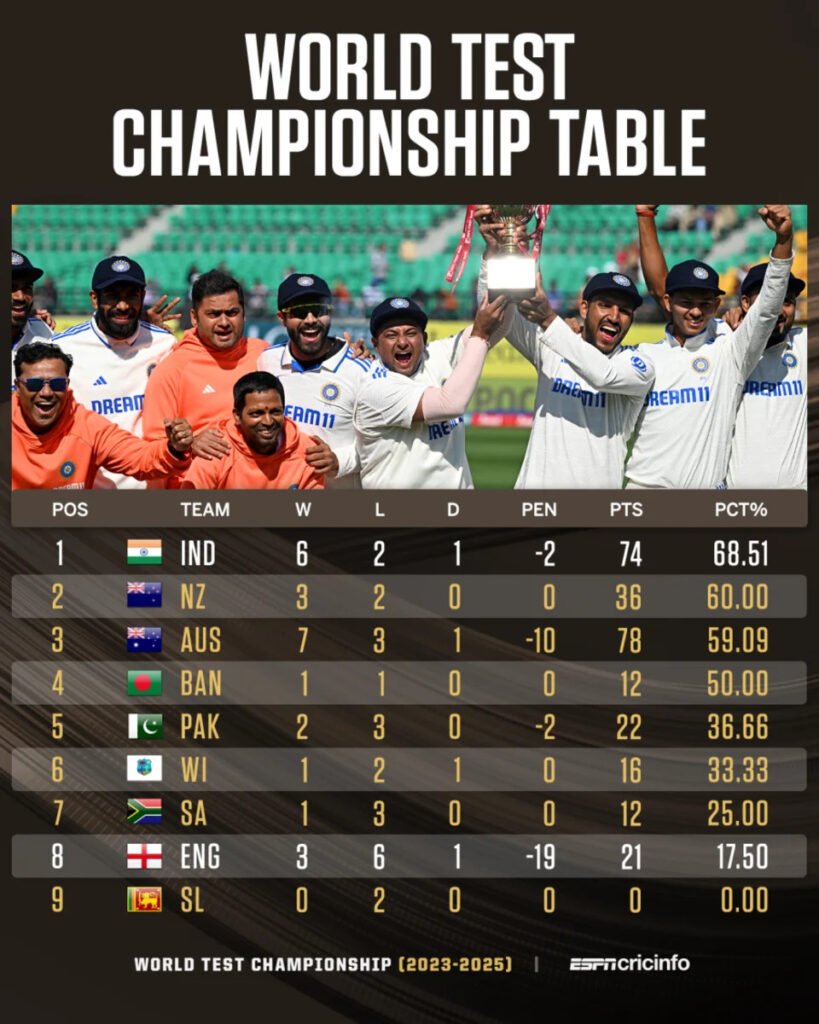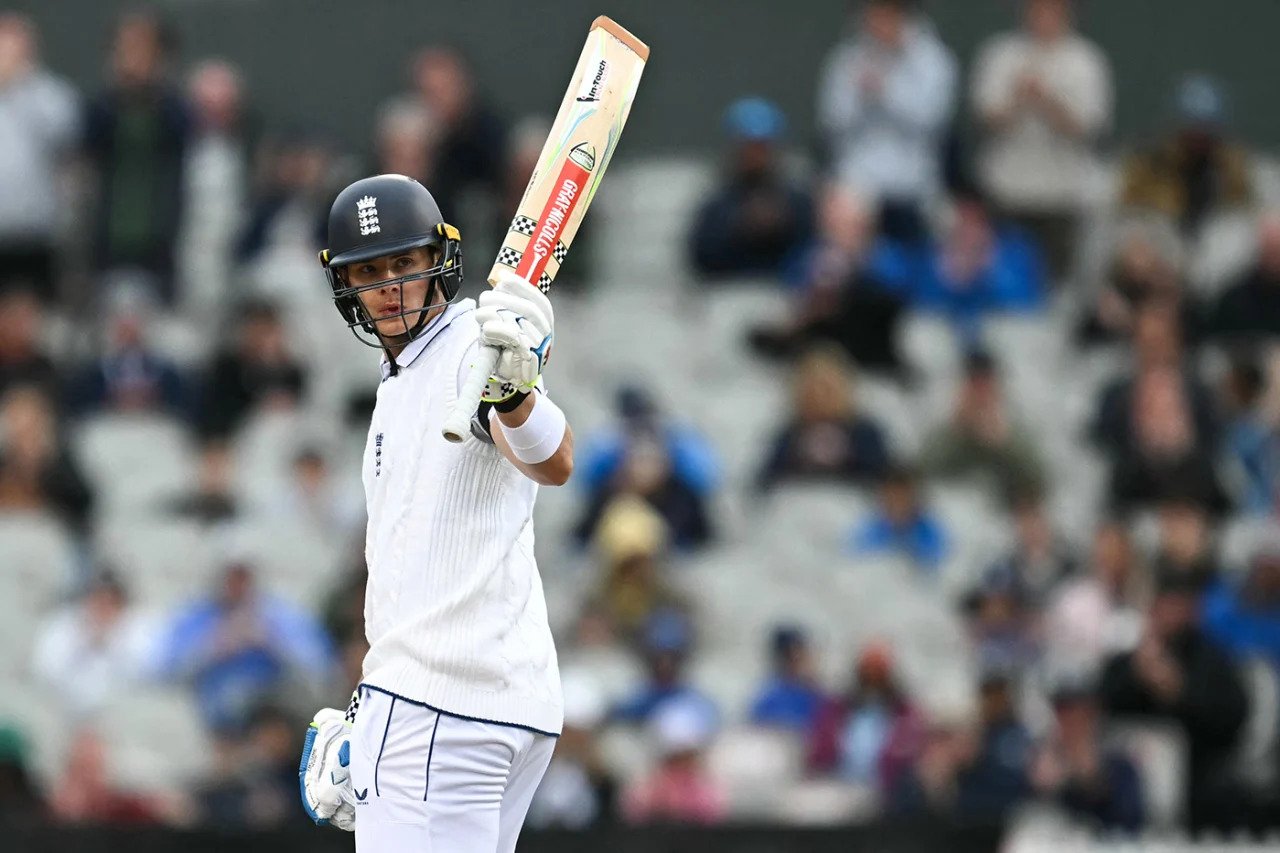India’s star spinner Ravichandran Ashwin showcased his brilliance in his milestone 100th Test match, guiding India to a resounding victory over England in Dharamsala.
In Dharamsala, England lost the series 4-1 after yet another collapse.

England 218 and 195 (Root 84, Ashwin 5-77, Bumrah 2-38) were defeated by India 477 (Gill 110, Rohit 103, Padikkal 65, Sarfaraz 56, Bashir 5-173) by an innings and 64 runs.
The England team’s attempt to reach new heights during their tour of India ended in an innings defeat in Dharamsala and an embarrassing 4-1 series scoreline that, if not the fiercer play that had preceded it, was a fitting representation of the long-lasting gap between the two teams. The match ended in an avalanche of wickets in the foothills of the Himalayas.
If nothing else, James Anderson reached a level that most likely no other seam bowler would ever reach when he claimed his 700th Test wicket in the first overs of the day. However, one of the most enduring players in Test cricket history was left to add his own stamp to a historic match. R Ashwin, playing in his 100th Test, extended his own total to 516 and counting with 5 for 77, his 36th five-wicket haul, as victory was wrapped up in two sessions on the third afternoon.
Even though Ashwin was outstanding the entire game, his entire sleight of hand was revealed in a captivating performance that took place prior to lunch. During 8.5 overs, Ashwin took four of England’s top six, including both openers for a total of two runs, and their distraught captain, Ben Stokes, with the final ball of the session. The play was only broken by a passionate cry from fellow caps centurion, Jonny Bairstow. With a precision and surgical approach, every victim was dissected – almost like an autopsy considering the sheer quantity of deceased men who fell into his astounding network of lies.
This, Bazball, was not. The literal confidence trick that had enabled England to over-reach their perceived limitations in the early exchanges of the campaign through sheer willpower has long since been banished, thanks as much to the skill of Ashwin, Jasprit Bumrah, Kuldeep Yadav, and Co. as to the brutal one-upmanship of India’s own batting onslaughts.
Consequently, there was never any hope for a second Hyderabad miracle when confronted with a massive 259 wicket deficit, following Shoaib Bashir’s five-wicket haul to support Anderson’s decision to end India’s first innings for 477.
On that occasion, England had overcome a 190-run deficit, led mainly by Ollie Pope’s 196. This time, Pope fell victim to a top-edge as he unconvincingly flapped across an ill-advised sweep, becoming Ashwin’s third victim in the opening ten overs for India. And even though Joe Root lingered like a fading memory to hold onto some individual and group pride, the cause had already been lost by the time he was the last man out for 84 – appropriately caught by Bumrah on the long-off boundary to give Kuldeep the last wicket in a match that he had started with five wickets in the first day for India.

When addressing the media at the halfway point in Hyderabad, England’s spin coach Jeetan Patel appeared naive and cautious, hedging most of his bets. Therefore, if England had any hope at all, it would have had to be reinvested in their openers, Ben Duckett and Zak Crawley, whose record of seven 45-plus stands in nine previous innings had been the only consistent indication of their aggressive intentions throughout the tour.
But this time, Duckett’s helpless game was engulfed in fear as soon as Ashwin arrived, brandishing the sharpest of scalpels as he took his share of the new ball. He learned early on in a tangle of limbs that he could not rely on his preferred sweep, much less poke speculatively from the crease, as he did to the fourth ball of Ashwin’s opening over, given Ashwin’s cunning mastery of seam and cut.
After a single delivery, he dashed across the pitch to confront the cunning bowler, but the bowler proved to be too cunning for him. With just two runs on the board, Ashwin smashed back Duckett’s off stump by dropping his length like a boulder three meters down the pitch.
At this point, Crawley was more concerned with making it through Bumrah’s consecutive maidens, one of which was an unplayable cutter that snuck past his outside edge. Even the most composed of England’s opponents on this tour was startled when Ashwin managed to finally set him up for the first time in the sixth over, as his first ball gripped and twisted a full 10 degrees back into his pads.
Two balls later, half the spin was produced by a similar line and length outside off, and Sarfaraz Khan was in the ideal position at backward short leg to pocket the deflection. Crawley had scored 407 runs in nine straight double-figure innings, but the game concluded with a 16-ball duck.
When Pope’s timid performance was revealed, England’s innings was in ruins. Arrives Bairstow, puffing out his chest as he had planned for his own century-long Test match, for a belligerently brief counterattack that summed up the triumph of optimism over pessimism that has defined so much of his diverse career in Test matches.

Suddenly, Bairstow abandoned his cautious approach and launched Ashwin into the hills, putting him back where he’d been at the end of the series. Jonny was showing signs of being back to his best, as seen by two straight slog-swept sixes in Ashwin’s seventh over and a third in seven balls shortly after, anytime the ball was in his arc.
Regretfully, Kuldeep was also on shortly later for England. In his opening over, he was once again in the wickets, just as he had derail them in the first innings, as Bairstow, not for the first time, found his left-arm angles too confusing to counter. To be pinned on the rear foot in front of the leg, he played back to a powerful twisting legbreak with his left arm. Bairstow had to go off for 39, his highest score of a painfully disappointing series in which he had achieved at least 25 in seven of his ten innings, when the umpire’s call supported the appeal.
Bairstow’s campaign at least has the merit of having been attempted in the correct way. In contrast, Stokes scored just one run for the fourth time in a row, and like in the first innings at Ranchi, his dismissal at the stroke of lunch left England trailing and lacking motivation. Although it’s not a common criticism of Stokes, this most recent dismissal—which was caused by Ashwin’s arm ball that swerved past his inside edge—continued a trend of noticeably cowardly removals.
Stokes’ approach to the pitch was not nearly as impressive as his mechanics suggested; once more, he raised his head to the sky, seemingly acknowledging his inability to overcome such brilliance. Granted, this was Ashwin’s 13th victory over Stokes. However, like to numerous other middle-order players, Stokes’ series figures verified how far short of expectations he had fallen: 199 runs at 19.90, with 65 runs at 10.83 in the final three Tests.
Ashwin had taken his fifth after lunch, which had hardly settled in. Ben Foakes appeared to be settling into his stand with Root in the early going, only to be drawn into the kind of adrenaline surge that has defined his teammates’ performances but not typically his own. When Ashwin threw one up beyond his line of sight, Foakes kneeled into a powerful yahoo across the boundary, but the ball bit him and tore back through his gate.

At least Tom Hartley finished his debut series with a batting masterclass at 113 for 6, which will undoubtedly give him an advantage come home when England resumes using a lone spinner.
However, despite toiling with Root for 20 arduous runs, he was unable to match the outstanding Bumrah, who was captain of India’s on-field team as Rohit Sharma was recovering from a stiff back.
Speculative review was useless as Bumrah’s second delivery of his new spell slithered back into the left-hander’s pads, trapping him so far in front of the opponent. Surprisingly, Bumrah claimed his first wicket of the game, an unbelievable wait considering his explosive opening stint on the first morning. However, the wait for his second wasn’t as long. After two balls, Bumrah struck with a precise yorker that knocked Mark Wood out for a duck. He did get a second opinion this time, but it was ineffective. India was circling for the kill at 141 for 8.
At least Root decided to close out his own campaign with a bang. He started to play with the stealth and class of the past, playing late and relying on his defence to an extent that none of his teammates could ever begin to match. He had plans to end the series with his second century of the series, while Bashir was hanging around with him in a valiant 48-run stand for the ninth wicket.
However, Ravindra Jadeja suddenly appeared to bowl Bashir for 13 after the batsman had made some jokes by demanding a review. With Anderson as his lone companion, Root decided to take a chance and lost. At the end of India’s most comprehensive team effort of the series, Kuldeep rightfully claimed Player-of-the-Match, despite a plethora of rival claims. It was the perfect finish in every way. If Ashwin was the right person to take advantage of England’s faulty thinking, then Kuldeep‘s incomprehensible cunning was the one who had initially broken it.





